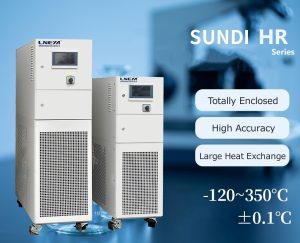How to handle the malfunction of the expansion valve of an industrial water chiller machine?
Preconditions for regulating thermal expansion valves
1. Before adjusting the thermal expansion valve, it is necessary to confirm that the refrigeration abnormality is caused by the deviation of the thermal expansion valve from the optimal working point, rather than due to other reasons such as improper refrigerant filling amount in the system, blockage of the drying filter and expansion valve filter screen, malfunction of the solenoid valve, poor cooling of the condensing fan, and the cooling power of the new compressor and the system not being equipped.
At the same time, it is necessary to ensure the correctness of the sampling signal of the temperature sensor, and the installation position of the temperature sensor must be correct. It must not be installed directly below the pipeline to prevent factors such as oil accumulation at the bottom of the pipeline from affecting the correct temperature sensing of the temperature sensor. In addition, if the thermal expansion valve that has lost its adjustment function is replaced with a new expansion valve, the new product usually has undergone debugging and calibration before leaving the factory, so there is no need to adjust the expansion valve again. It can be installed and used directly.
2. Shutdown. Insert the probe of the digital thermometer into the insulation layer at the return air port of the evaporator (corresponding to the temperature sensor position). Connect the pressure gauge to the three-way of the compressor low-pressure valve.
3. Turn on the compressor and let it run for more than 15 minutes to enter a stable operating state, so that the pressure indication and temperature display reach a stable value.
Adjustment steps of thermal expansion valve
When making adjustments, first unscrew the valve cap below the thermal expansion valve and rotate the valve stem clockwise to reduce the opening of the needle hole in the valve body, which means that the liquid supply flow rate is reduced (briefly referred to as clockwise loosening); On the contrary, if the needle hole is opened larger, that is, the liquid supply flow rate increases (briefly referred to as reverse rotation).
The method is the same as adjusting the water valve to control the flow of water. The flow adjustment should be carried out during the normal operation of the refrigeration system, and it should be operated slowly and gradually adjusted. The judgment basis for adjusting the flow rate of the liquid supply is as follows:
(1) Determine whether the adjustment size is appropriate based on the shape change of frost formation on the thermal expansion valve.
A. If all the expansion valve bodies are frosted, it indicates that the flow rate is too low and should be increased;
B. If the frost shape does not change during the adjustment, it may be that the expansion valve orifice is partially blocked and should be cleaned;
C. If the expansion valve body only has frost on the outlet side, it indicates excessive flow and should be reduced;
D. If the outlet and lower parts of the expansion valve body are inclined to form frost at 45 ℃, the inlet side should not form frost, indicating accurate and appropriate adjustment;
E. If the expansion valve body only has frost on the inlet side, it indicates that the filter screen at the inlet of the valve body is blocked and should be cleaned;
F. If the expansion valve body is completely free of frost, it indicates that there is no flow rate. It is possible that the refrigerant has leaked out, the shut-off valve in the pipeline has not been opened, the capillary of the expansion valve temperature probe has leaked, the expansion valve throttle hole is blocked, or the filter screen at the inlet of the valve body is blocked. Cleaning should be carried out.
(2) It can also be determined whether the adjustment size is appropriate by the shape change of frost at the suction pipe of the compressor.
A. If white frost forms at the suction shut-off valve, it indicates excessive flow and should be reduced;
B. If the white frost cannot form on the suction tube, it indicates that the flow rate is too low and should be increased.
(3) In addition, the appropriate adjustment size can be determined by the pressure value on the low-pressure side.
(4) Determine whether the adjustment size is appropriate based on the uniform and complete condition of the evaporator coil frost formation.
(5) Under normal circumstances, the expansion valve operates quietly. If it emits a noticeable “faint” sound, it indicates that the refrigerant in the system is insufficient.
(6) Use a thermometer to compare the difference between the temperature of the return pipe and the evaporation temperature (i.e. actual superheat) and the standard superheat (between 5-8 ℃) to verify whether the adjustment is appropriate.
Using the suction pressure of the compressor as the saturation pressure inside the evaporator, look up the table to obtain the approximate evaporation temperature.
Measure the temperature of the return pipe with a thermometer and compare it with the evaporation temperature to see if it is within the normal range of 5-8 ℃. It is necessary to simultaneously read the suction pressure value and the return pipe temperature, otherwise the actual superheat calculated will be inaccurate.
 LNEYA Chillers
LNEYA Chillers





HelloLog in